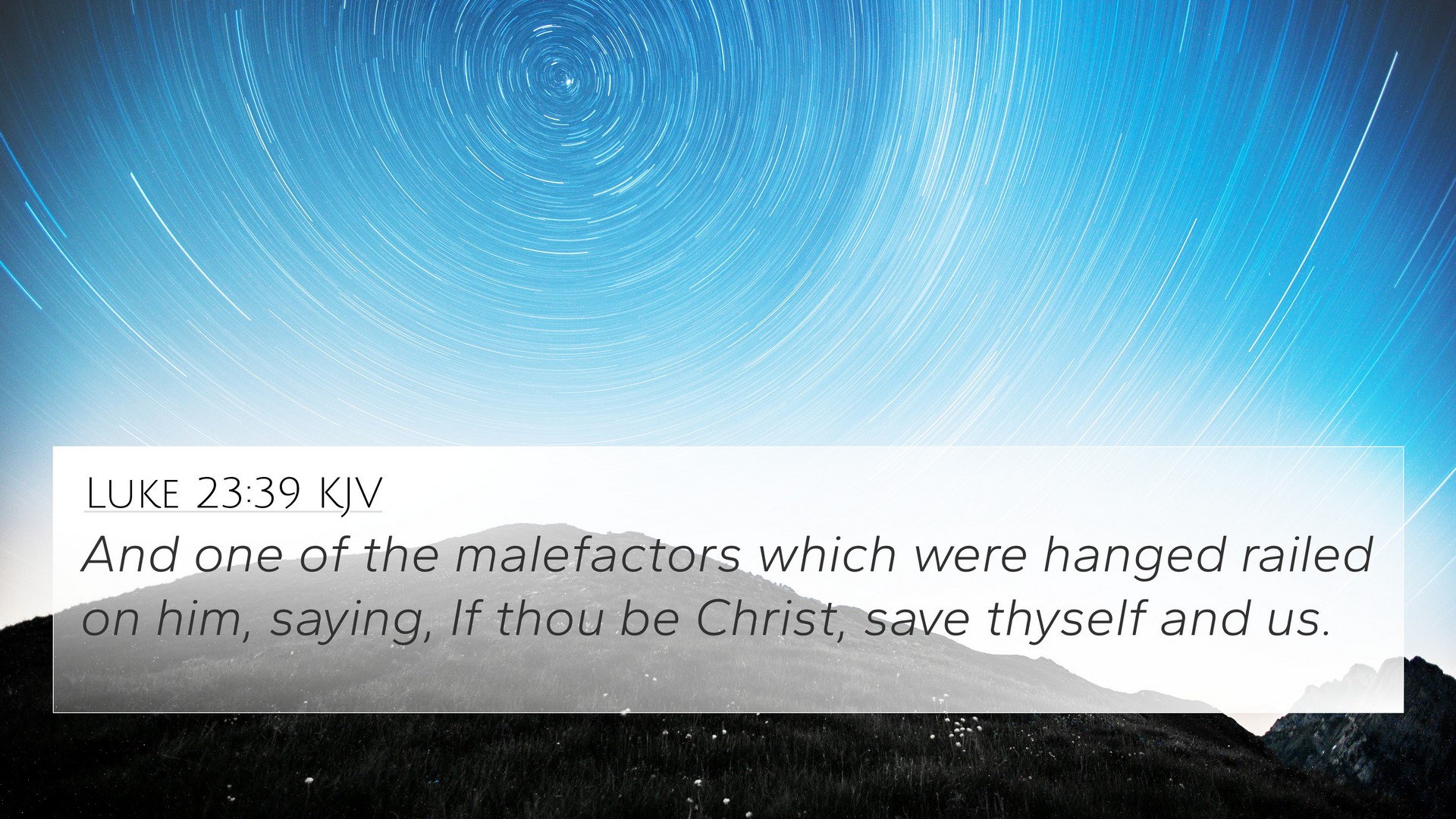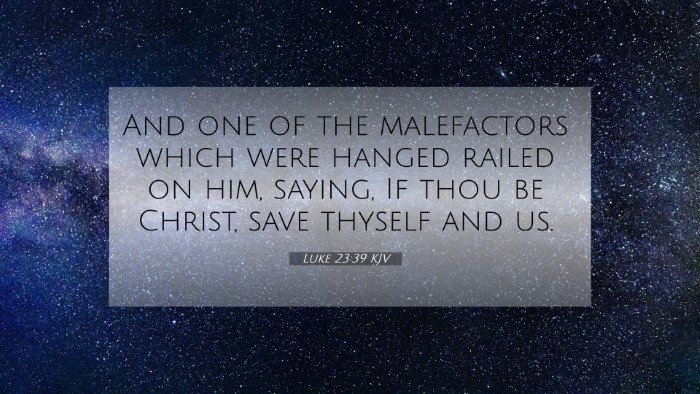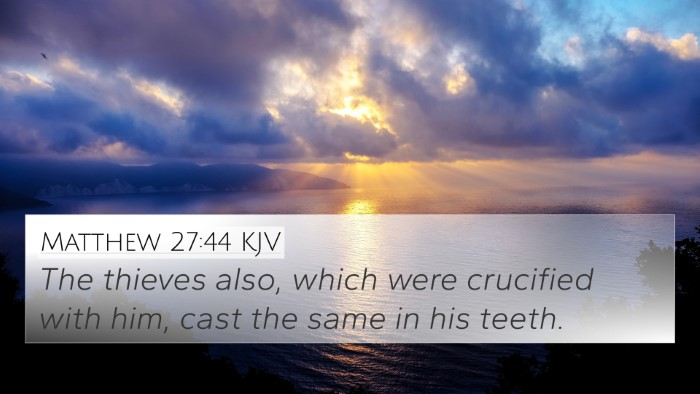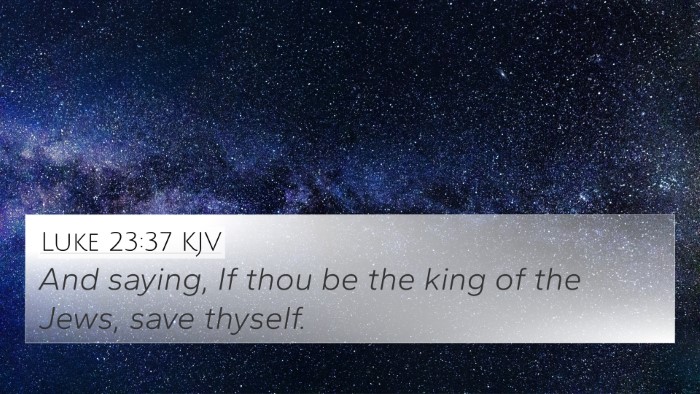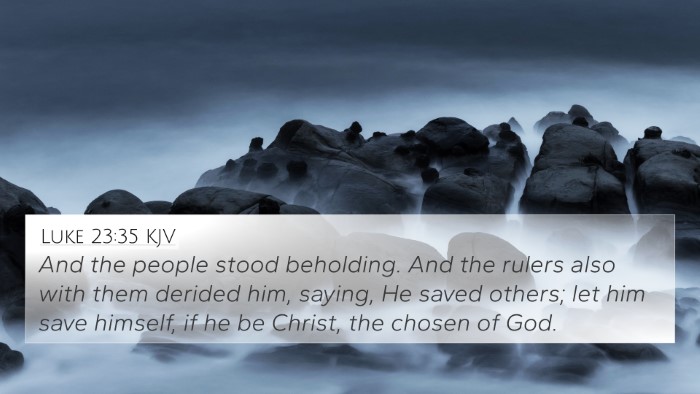Understanding Luke 23:39
Verse: Luke 23:39
“One of the criminals who were hanged railed at him, saying, 'Are you not the Christ? Save yourself and us!'”
Interpretation and Summary
In Luke 23:39, we see a poignant moment during the crucifixion of Jesus, where one of the thieves crucified alongside Him hurls insults, questioning His identity and power. This verse highlights the themes of skepticism, mockery, and the human condition when faced with suffering.
Commentary Insights
- Matthew Henry: This commentary underscores the rejection Jesus faced even in His agony. Henry illustrates this thief’s attitude as reflective of many who doubt Christ in moments of despair. The criminal's question embodies the coldness of the heart that does not recognize the divine purpose of Jesus' suffering.
- Albert Barnes: Barnes points out that this thief serves as a representation of human disbelief. He emphasizes that the challenge to save Himself, and others, underscores how people often fail to recognize the spiritual depth of Christ's mission, mistaking power for miraculous rescue.
- Adam Clarke: Clarke brings focus to the irony of the scorn expressed by the criminal. He notes that despite being in the presence of grace itself, the thief chooses to express hatred and derision, showcasing a profound misunderstanding of Jesus' role and the nature of His kingdom.
Thematic Bible Verse Connections
This verse can be linked to several others that illustrate themes of mockery, belief, and salvation. Here are some related cross-references:
- Matthew 27:44: Both the robbers who were crucified with Jesus reviled Him.
- Mark 15:32: The statement reflects the common scorn of those surrounding Jesus during crucifixion.
- John 3:18: Here, we see the theme of belief and condemnation, contrasting with the skepticism expressed by the criminal.
- Luke 23:40-43: This passage details the second criminal rebuking the first, showcasing a shift from mockery to recognition and belief.
- Psalm 22:7-8: Prophetic words foreshadowing the scorn cast upon Jesus during His crucifixion.
- Isaiah 53:3: This verse speaks of Christ as despised and rejected, connecting to the actions of the criminal.
- Romans 10:9: The theme of salvation through belief, contrasting with the mockery of the thief.
Cross-Referencing Biblical Texts
When studying Luke 23:39, one can utilize various Bible cross-reference tools to explore deeper meanings and connections:
- Utilize a Bible concordance to find thematic parallels.
- Employ a Bible cross-reference guide to facilitate comparative analysis of the Gospels.
- Engage in cross-reference Bible study for a broader understanding of thematic elements represented in scripture.
Conclusion
Luke 23:39 serves as a powerful reminder of the duality of belief and skepticism present at the crucifixion of Christ. This verse invites us to reflect on our own perceptions of faith, redemptive grace, and the reality of God's presence in suffering. Through examining cross-references and commentary insights, believers can gain a richer understanding of the Scriptures and how they interconnect.
